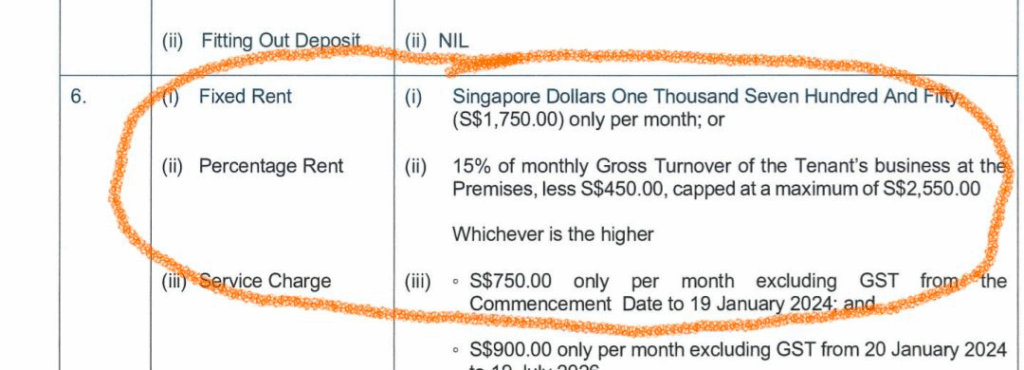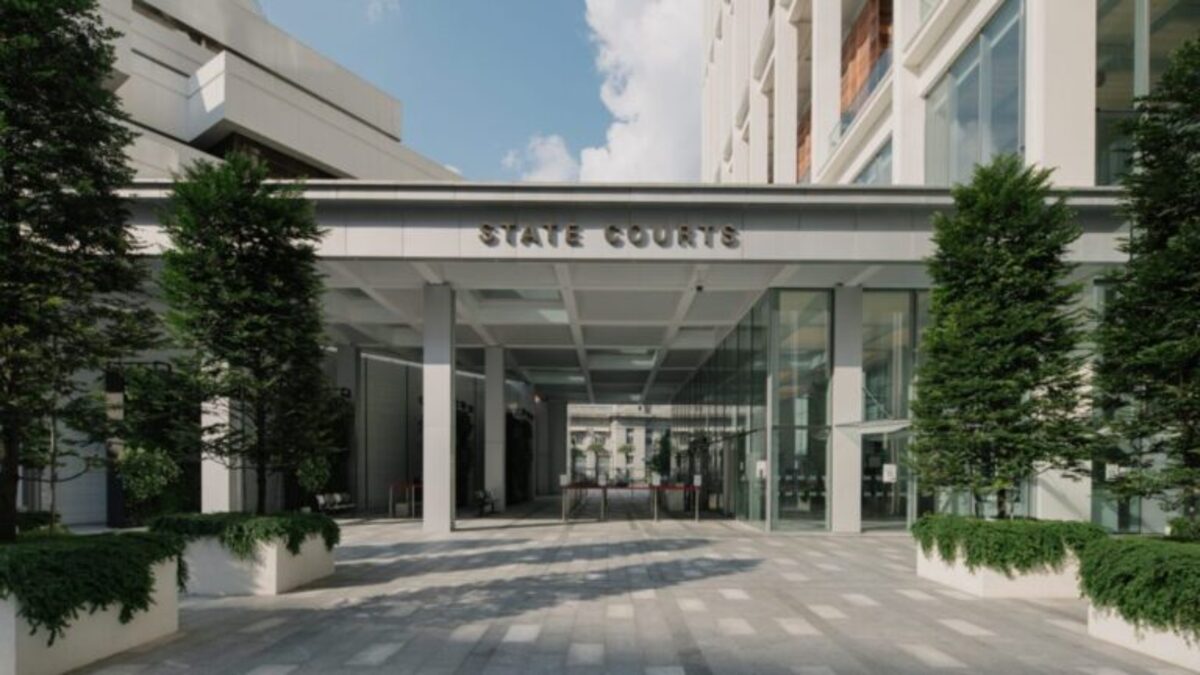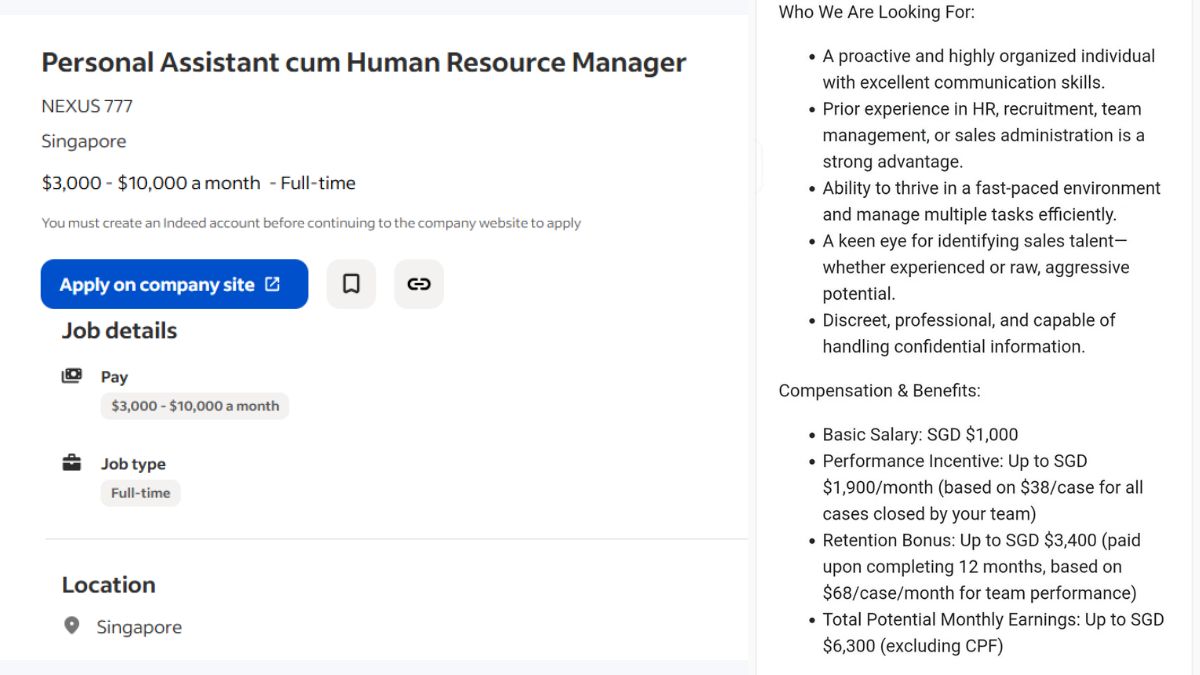Yishun Park hawker laments rising costs, restrictive contracts and 'heavy-handed' management
In three Facebook videos posted in early November 2025, Singapore food critic KF Seetoh interviewed a hawker from Yishun Park Hawker Centre who raised concerns over high costs, CCTV monitoring, and restrictive management rules. Seetoh said he protected the hawker’s identity so that stallholders could “speak their truth” without fear of reprisal.

- KF Seetoh interviewed a hawker criticising management practices at Yishun Park Hawker Centre.
- The hawker cited high gas prices, CCTV surveillance, and penalty clauses as major concerns.
- Timbre Group defended its gross turnover rental model and use of cameras as necessary measures.
SINGAPORE: In early November 2025, food critic and hawker culture advocate KF Seetoh released three videos on his Facebook page featuring an interview with a hawker who claimed to work at Yishun Park Hawker Centre, managed by Timbre Group.
The videos revisited longstanding concerns about Singapore’s Socially-conscious Enterprise Hawker Centre (SEHC) framework, particularly regarding rising operational costs, strict contractual rules, and the use of surveillance technology.
Seetoh said he protected the hawker’s identity with an alias, “David,” explaining that some stallholders wanted to “speak their truth” but feared reprisals for speaking out.
TOC has sought comment from Timbre Group on the hawker’s claims and will publish their reply upon receipt.
In the first video, posted on 4 November 2025, David acknowledged the hawker centre under SEHC model as clean, spacious, and well-equipped, noting family rooms and modern facilities.
However, he contrasted these improvements with “heavy-handed” management.
He said stallholders faced multiple layers of regulation, including the compulsory rental of a point-of-sale (POS) system costing about S$120, locked into a three-year contract.
The system allows the operator to monitor sales and ensure transactions go through approved channels.
David also highlighted gas charges at S$14 to S$15 per unit, compared with S$8 to S$10 at traditional NEA-managed centres, calling the difference “demoralising.”
Complaints over the 15 per cent gross turnover model
The hawker alleged that Yishun Park Hawker Centre’s 15 per cent gross turnover (GTO) rental model penalised successful stallholders, with rent capped at S$2,550.
“When a hawker does well, they have to be penalised,” he said. “It doesn’t make sense.”
Concerns about CCTV surveillance and privacy
Another major concern raised in the videos was the installation of CCTV cameras inside individual stalls.
In the second video, Seetoh asked if the devices could “monitor and listen” to daily routines, suggesting potential privacy violations.
David said the cameras were installed without prior notification in early 2025. “We felt outrage,” he said.
“It showed distrust in what we do. It impedes our creativity and freedom.”
In Aug 2025, Seetoh pointed out Timbre allegedly imposed S$100 fines for a list of 18 offences, including refusal to use the loyalty app or discussing internal matters publicly.
David said the rules were applied punitively and that management sometimes “shamed” hawkers by posting photos of minor infractions, such as cluttered stalls, in group chats.
“Shaming hawkers won’t help,” he said. “We became defensive instead of improving.”
Control over leave and absence
In the third video, David added that hawkers had to seek approval before closing their stalls or taking medical or family leave, even though no paid leave was provided.
“When we are sick, we have to inform them,” he said. “If we want to go on holiday or close early, we have to tell them. We asked, ‘Who’s paying for the annual leave?’ — no one is paying.”
Addressing cost pressures, David said ingredient prices had nearly doubled over the years.
Cooking oil rose from S$17–S$19 per 18-kilogram tin to around S$36, while rice increased from S$29 to S$42 for a 25-kilogram sack.
Despite inflation, hawkers were reportedly required to provide a budget meal priced at S$3.60, only slightly higher than the S$3.00 benchmark from 2017.
“It’s hard for us to justify selling something that cheap in today’s world,” David said. “We’re expected to help the community, but no one is subsidising us.”
Responsibility to serve affordable food
In one exchange, Seetoh questioned whether hawkers were unfairly burdened with the responsibility of keeping food prices low.
David replied, “It’s an unfair deal where the burden of making food affordable for the masses is put on us. We’re also trying to earn a living. There’s no budget rent or budget utilities.”
He urged authorities and operators to “help hawkers thrive, not help themselves to hawkers who are struggling to survive.”
Previous concerns and background from August 2025
The November 2025 videos followed an earlier episode in August 2025, when Seetoh had publicly criticised Singapore’s SEHC framework.
In that instance, he posted Facebook comments calling the SEHC model “exploitative” and urged a “major overhaul” of the system.
He highlighted issues such as long tenancy contracts, revenue-based rent, and extensive penalty clauses.
He cited the example of Canopy Hawkers Group at Bukit Canberra Hawker Centre, where clauses required hawkers to provide free meals or face penalties — a claim later verified by Lianhe Zaobao.
Following that controversy, Timbre Group issued a statement defending its management of Yishun Park Hawker Centre.
Timbre Group’s August 2025 response
In its August 2025 response, Timbre said the GTO rental model was designed to “share both risks and rewards” between operators and hawkers.
The cap of S$2,550 was meant to ensure fairness, and successful stalls often paid below the nominal 15 per cent rate.
The company stated that 50 per cent of operating surpluses were reinvested into hawker support, community events, and marketing campaigns to boost footfall.
On CCTV use, Timbre said cameras were installed in August 2024 after repeated complaints from residents about late-night noise.
They were also used to verify transactions and improve safety.
“The CCTVs enable us to identify potential noise sources and address residents’ feedback,” Timbre said.
It described the S$100 fines as a “last resort” following verbal and written warnings, adding that non-compliance clauses had existed since inception to ensure hygiene and fairness across all stalls.
Clarifications on gas supply and loyalty app
Timbre explained that gas supply contracts were centrally negotiated through competitive procurement to keep prices consistent.
The company added that discounts were extended in 2025 to help offset rising costs.
Regarding its loyalty app, Timbre said the 10 per cent customer discount was fully funded by the operator and encouraged repeat patronage that benefited hawkers.
The company also clarified that its Timbre Pizza stall was located at One Punggol Hawker Centre, not Yishun Park, and had closed in August 2025 as part of a restructuring exercise.
Ongoing calls for review of SEHC model
As of February 2023, Minister for Sustainability and the Environment Grace Fu reported that Singapore had 12 SEHCs, with median stall rents at S$1,700, compared with S$1,250 in non-subsidised NEA hawker centres.
Operators must submit rent proposals upfront in their NEA tender bids and cannot revise them during tenancy terms.
Despite the government’s intention to balance social and financial goals, Seetoh has continued to argue that the current SEHC framework risks undermining the very culture it seeks to protect.








1 Comment